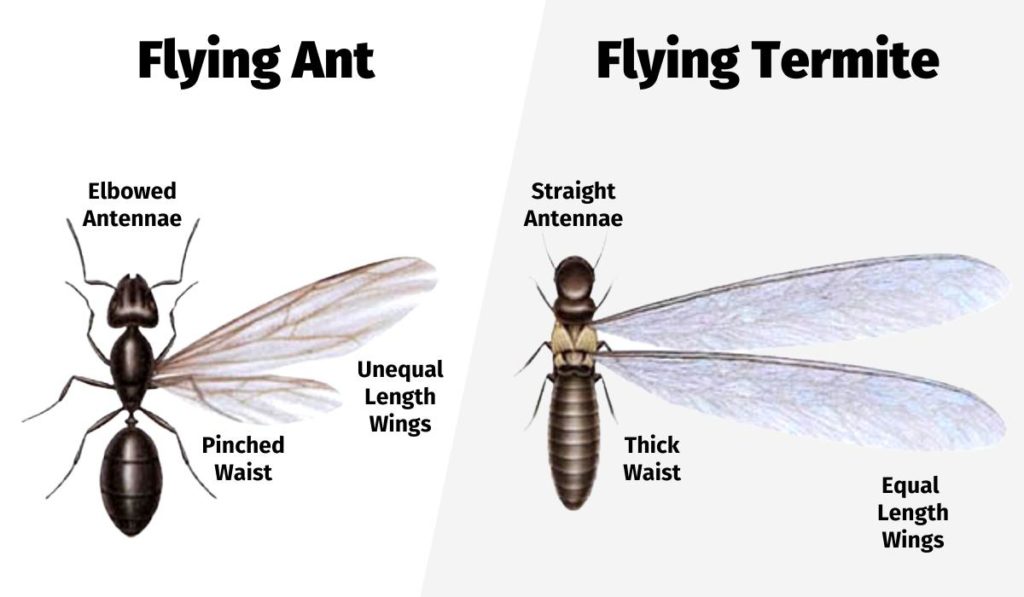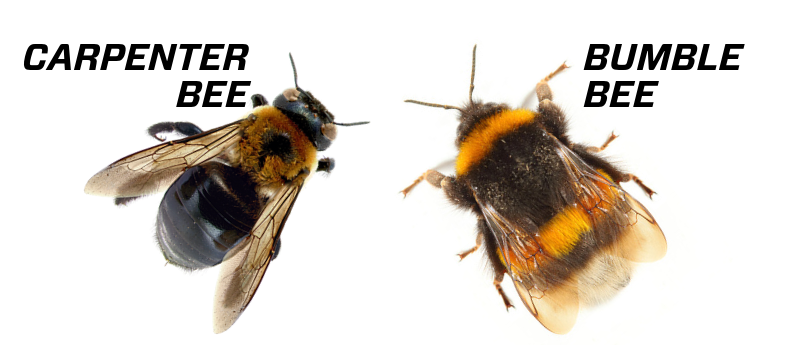When you own a home, you must always be on the lookout for threats. Unseen threats can include termites, carpenter bees and other house-destroying insects. These pests may be undetectable until such time as their volume or damage becomes noticeable, which can happen at any time. Once detected, it is time to take action. Here’s a quick guide to identifying termites, carpenter bees and other house-destroying insects.
Termites
Termites can secretly live in your home for a long time before they are detected, with sometimes significant damage—more than $5 billion in damage each year, according to Orkin. Some termites burrow into your wooden structures (drywood termites), while others make their homes underground (subterranean termites).

Drywood termites mainly live in the South’s warm climates, and live in tunnels within the walls. Indications of an infestation can include sagging ceilings, walls and floors, or areas that look like water damage. Subterranean termites are found everywhere in the contiguous United States, and build tunnels of mud and their saliva and feces near your home’s foundation.
Some indications of a termite infestation can include a swarm of insects, piles of wings on windowsills or around the foundation, mud tunnels, crumbling wood, and maze-like patterns in wood furniture or floorboards.
Homeowners should periodically contact a termite professional to perform a termite inspection. If termites are discovered, the company can prescribe the right treatment plan.
Carpenter Bees
Carpenter bees arrive in the spring to create nests in your home’s unpainted, weathered wood, most often in the eaves, rafters, fascia boards, siding, wood shake roofs, and even your outdoor furniture. They will not tunnel into painted surfaces.

The fertilized female bores into the wood to create a tunnel in which to lay her eggs, and leaves behind a round entrance hole about the diameter of your little finger, and coarse sawdust. Inside the tunnel, she creates 5-6 cells to hold individual eggs, sealing each with regurgitated wood pulp.
Cosmetic and structural damage can become a problem, especially if the nests are not discovered and eliminated early. In addition to the holes, moisture, rot and decay can infiltrate your home. And even after they are abandoned, the tunnels can become inviting homes for other insects.
Act early if carpenter bees are discovered. Inject insecticides into the tunnels and leave the holes open for a few days to enable the bees to distribute the insecticide throughout the tunnel through their contact. Then plug up the entrances.
Carpenter bees closely resemble bumblebees, but are less likely to sting than wasps or bees that live in colonies. Males can hover in front of people to warn them away from a nest, but they cannot sting. Females can sting, but rarely do unless handled or bothered by a person.
Other House-Destroying Insects
Carpenter Ants. Found mostly in the cooler Northern states, carpenter ants tunnel through wet or rotted wood to build their nests. You’ll generally find them around window and door frames, in crawlspaces and attics, and near water sources like sinks and bathtubs. Small piles of wood fragments and wood dust are indications of an infestation.
Powderpost Beetles. Second only to termites in their wood-destroying power, powderpost beetles love to attack hardwoods—the same wood used to build your home.
Worried about Termites, Carpenter Bees or Other Pests? Golden Rule Home Watch Looks Out For Your Home.
While Golden Rule Home Watch & Concierge is not a pest control company, pest infestations like those of termites and carpenter bees are something we look for when inspecting your home on a home visit. If we see signs of infestation, nests, or damage, we notify you immediately to talk about a plan of action. Sometimes these things can wait, while other times, they cannot. If not, we are glad to step in as your advocate while you’re away to line up and allow access to a pest control specialist.
If you need to leave your Northern Virginia home for an extended period, don’t leave it unattended. Use a professional Home Watch service like Golden Rule Home Watch & Concierge. Learn more about our Home Watch, Car Watch and Key Watch services, and contact us for a free initial consultation.




